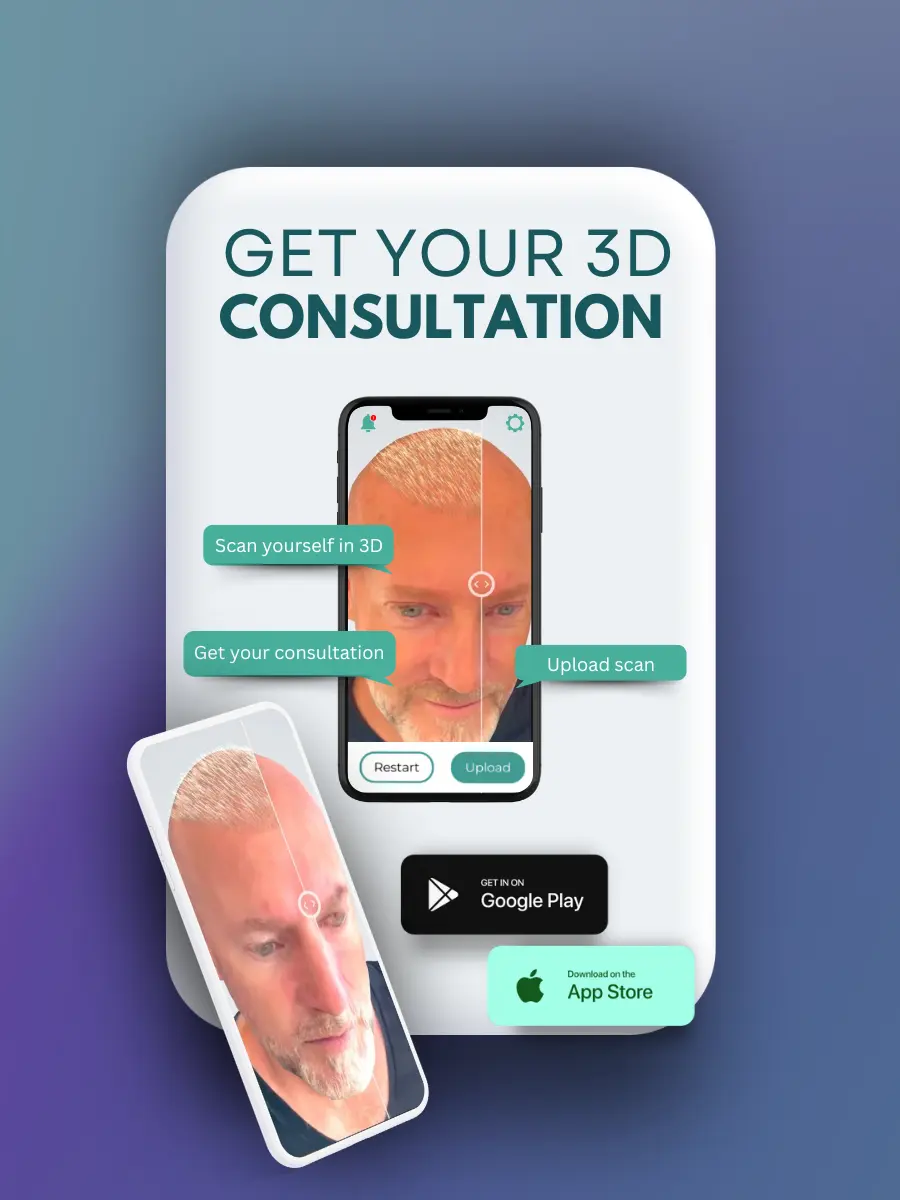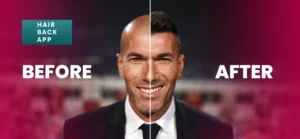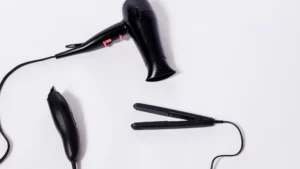Hair transplant surgery is a significant investment in reclaiming one’s confidence and self-esteem. However, the prospect of shock loss after hair transplant, a temporary shedding of transplanted and existing hair, can be a concern for many individuals undergoing this procedure.
My name is Emma Wright, your resident hair restoration specialist. Today we’ll be discussing what is shock loss and how to prevent shock loss after hair transplant.
Shock loss is a temporary shedding of hair that commonly occurs after hair transplant surgery. This phenomenon can be attributed to trauma inflicted on the scalp during the transplantation process, as well as the body’s natural response to surgical intervention.
In case you don’t know, shock loss occurs due to trauma to the scalp during surgery and can lead to temporary thinning or loss of hair in the recipient and donor areas. While it is a natural part of the healing process, there are steps you can take to minimize its impact and promote healthy hair growth post-transplantation.
While shock loss may initially raise concerns, it is typically a transient phase in the hair restoration journey. So, how do you prevent shock loss? Let’s see.
What is Shock Loss?
Shock loss, also known as telogen effluvium, is a temporary shedding of hair that commonly occurs after certain medical procedures or events, including hair transplant surgery.
It is characterized by the sudden and accelerated shedding of both transplanted and existing hair in the recipient and donor areas of the scalp. This phenomenon typically occurs within the first few weeks to months following the procedure and can last for several weeks.
During hair transplant surgery, the scalp undergoes trauma as hair follicles are harvested from donor areas and transplanted into recipient sites. This trauma can disrupt the hair growth cycle, causing affected hair follicles to enter a resting phase known as telogen. As a result, these follicles shed their hair prematurely.
Additionally, the body’s natural response to surgery, including inflammation and stress, can contribute to shock loss. Factors such as individual genetics, the technique used during the procedure, and the skill of the surgeon can also influence the severity and duration of shock loss.
It’s important to note that shock loss is typically temporary and reversible. As the scalp heals and the hair follicles transition back into the growth phase (anagen), new hair growth will gradually replace the shed hair.
In most cases, the transplanted hair follicles remain viable and continue to grow normally, leading to the desired outcome of thicker, fuller hair in the long term. While shock loss can be concerning for individuals undergoing hair transplant surgery, it is considered a natural part of the healing process.
However, there are steps that can be taken to minimize its impact, such as choosing an experienced surgeon, following preoperative and postoperative instructions, opting for advanced techniques, practicing scalp care, managing stress, and avoiding vigorous activities.

How to Prevent Shock Loss After Hair Transplant
1. Choose the Right Surgeon
Selecting a skilled and experienced surgeon is paramount in minimizing the risk of shock loss and achieving optimal results. Look for a surgeon who specializes in FUE hair transplant techniques, such as sapphire micro FUE or bio FUE, as these methods offer precision and minimize trauma to the scalp.
A knowledgeable surgeon will assess your candidacy for hair transplant surgery based on factors such as the Sinclair scale and your individual hair loss pattern.
2. Follow Preoperative Instructions
Prior to your hair transplant procedure, adhere to preoperative instructions provided by your surgeon. This may involve discontinuing the use of medications such as minoxidil, which can interfere with the surgery, and avoiding alcohol and smoking to promote scalp health.
By following these guidelines, you can optimize the condition of your scalp and minimize the risk of complications, including shock loss.
3. Embrace Postoperative Care
After undergoing FUE hair transplant surgery, diligent postoperative care is essential for promoting optimal healing and minimizing shock loss. Your surgeon will provide specific instructions regarding hair transplant aftercare, including how to sleep after hair transplant surgery and how to cleanse the scalp gently.
Additionally, consider using an anti-hair loss helmet to stimulate blood circulation and accelerate hair growth in the treated areas.
4. Avoid Vigorous Activities
In the days and weeks following your FUE hair transplant, it’s crucial to avoid activities that could exacerbate trauma to the scalp and increase the risk of shock loss. Refrain from rigorous exercises, heavy lifting, and activities that cause excessive sweating, as these can compromise the integrity of the transplanted follicles.
By prioritizing rest and minimizing physical strain, you can support the healing process and minimize complications.
5. Incorporate Minoxidil
Minoxidil, a topical medication commonly used to treat hair loss, can be beneficial in promoting hair growth after FUE hair transplant surgery. Your surgeon may recommend incorporating minoxidil into your postoperative regimen to stimulate hair follicles and enhance the density of transplanted hair.
However, it’s essential to follow your surgeon’s guidance regarding the timing and application of minoxidil to maximize its effectiveness and minimize potential side effects.
How Long Does Shock Loss Last?
The duration of shock loss can vary from person to person, and it typically depends on several factors, including the individual’s hair growth cycle, the extent of trauma during the hair transplant procedure, and the effectiveness of postoperative care.
In most cases, shock loss begins within the first few weeks to months following hair transplant surgery and may persist for several weeks.
Generally, shock loss is temporary, and the affected hair follicles will gradually transition back into the growth phase (anagen) as the scalp heals. New hair growth typically starts to become visible within a few months after the procedure, although it may take up to six to twelve months for full regrowth and optimal results to be achieved.
It’s important to note that while shock loss can be concerning, especially in the immediate postoperative period, it is a natural part of the healing process and does not indicate permanent damage to the transplanted follicles.
With proper care and patience, the shedding hair will be replaced by thicker, healthier strands, resulting in a fuller and more natural-looking hairline. If you have concerns about shock loss or its duration, it’s best to discuss them with your surgeon, who can provide personalized guidance and reassurance based on your specific situation.
Conclusion
While shock loss may be a concern for individuals undergoing FUE hair transplant surgery, proactive measures can significantly reduce its impact and support optimal recovery. By choosing a skilled surgeon, following preoperative and postoperative instructions, embracing postoperative care, avoiding vigorous activities, and incorporating minoxidil as recommended, you can navigate the challenges of shock loss with confidence.
Remember that patience is key, as the shed hair will gradually regrow, resulting in thicker, fuller hair and renewed confidence. With the right approach and commitment to aftercare, you can achieve the natural-looking results you desire and enjoy the lasting benefits of your hair transplant journey.
Unlock the key to a successful hair transplant by delving into our comprehensive education on the phenomenon, receiving expert postoperative care, and embracing the power of patience.
Ready to embark on your transformation? Click now to get a personalized hair transplant quote and take the first step towards your dream of a fuller, more vibrant mane!














